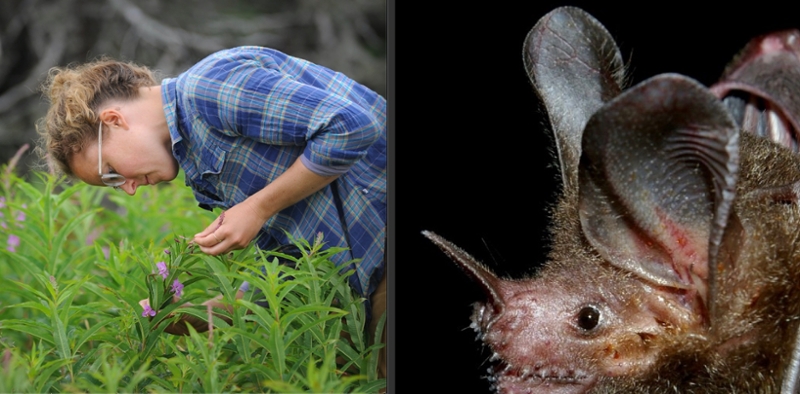What Bat Poop Can Tell Us
By Tom PorterA new study analyzing the eating habits of a particular bat species by tracing DNA found in fecal samples has revealed some unexpected eating habits. The findings also shed new light on how the nocturnal predator goes about hunting its prey, said Assistant Professor of Biology Patty Jones, the paper’s lead author.

“Because bats forage at night, and in the dense forest, you can’t observe what they are eating the way you can with a diurnal bird or mammal,” said Jones, who is also director of the Bowdoin College Scientific Station on Kent Island. She was quoted in a news release published by the Smithsonian . “It feels so momentous, therefore, to have a glimpse into the diet of this species that we thought we knew so much about, to discover they are eating prey we had no idea were part of their diet,” she continued.
The study looked at the eating habits of the fringe-lipped bat—Trachops cirrhosus, found in the jungles of Central and South America—by examining its guano. On top of its usual diet of frogs, insects, and reptiles, scientists found evidence of other prey, such as hummingbirds and even other bats. This, along with behavioral experiments done as part of the study, indicates these bats are eating a significant amount of silent, motionless prey, as well as those that make sounds.
“This led researchers to conclude that the fringe-lipped bat is more capable of locating prey by echolocation than previously thought,” said the news article. “These results may offer a new line of research on the sensory abilities and foraging ecology of T. cirrhosus. It also adds to a growing body of work that suggests that, in the tropics, bats may be important nocturnal predators on sleeping animals like birds.” (All this from looking at poop!)
“Because bats forage at night, and in the dense forest, you can’t observe what they are eating the way you can with a diurnal bird or mammal”
NOTE: This research was a collaboration between Jones and scientists at the Smithsonian Tropical Research Institute in Panamá, and Jones utilized the Bowdoin high-performance computing (HPC) environment to conduct the bioinformatics components of the research.



